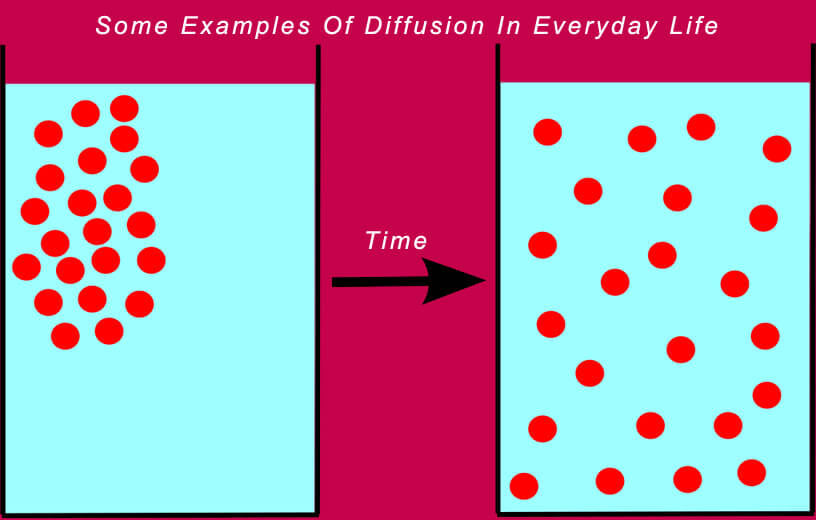- Water Testing Meters
- Anemometer
- Length & Distance Meter
- Multimeter & Clamp Meter
- Light and Sound Meter
- Slide Calipers & Screw Gauge
- Thermometer & Hygrometer
- Milk Testing Meters
- Paper, Grain & Wood Testers
- Stopwatch & Timers
- Soil Testing Meters
- Refractometers & Analyzer
- Magnetic Compass
- Tachometer & Megger
- Thickness & Dia-Meters
- Other Meter And Accessories
Some Examples Of Diffusion In Everyday Life

Have you ever wondered why the aroma of your perfume or the incense sticks lit by your mother permeates your home during prayers? This is all caused by diffusion. Diffusion is a fundamental factor in both natural and man-made processes. Being a universal physical phenomenon, we deal with it in our daily life. In this article, we will see some examples of diffusion in everyday life.

“Diffusion is the movement of particles from an area of higher concentration to an area of lower concentration, continuing until equilibrium is reached.” It is part of a study of chemistry in Bangladesh.
Let’s see some notable examples of diffusion that occur in our daily lives:
(1) Heat conduction or Heat Transfer
Heat conduction or heat transfer is an example of diffusion. Heat is transferred from a higher temperature to a lower temperature. This example we feel every time in our daily life.
(2) Food Coloring | examples of diffusion
Diffusion facilities have been widely used by the food industry, where it is common to use edible food coloring.
(3) Removal of Toxins and Waste Products from Our Body
Our body must constantly remove toxins and waste products produced during metabolism and the most important organ to accomplish this activity is the kidney; However, the kidney cannot do this alone, here too the concept of diffusion comes into play. Kidneys are composed of nephrons, which are the structural and functional units of the kidney. These are microscopic tubules that filter toxins from the blood. Nephrons first remove waste chemicals and toxins from the blood and then reabsorb water and nutrients into the blood by diffusion. Thus, diffusion also plays an important role in blood filtration.
(4) Transport of Minerals and Organic Molecules in Plants and Animals
Much of our survival depends on the process of diffusion; Our body cannot function properly without stretching; Because it is diffusion that facilitates the smooth transport of minerals and organic molecules in our body.
(5) Air Pollution
Apart from having many household uses of diffusion, it also brings some cons with it; air pollution being the most prominent cons caused by diffusion. When harmful gases, fumes, and toxic particles are released from various human-made sources including factories (like cement factories, chemical factories, brick kilns, etc), vehicles, and waste burning; then .they pollute the normal air with the process of diffusion.
(6) Breathing
When we breathe air, inhaling oxygen and exhaling carbon dioxide is possible only due to the process of diffusion. Therefore, diffusion is an important process in respiration.
(7) Soda or Cold Drinks are examples of diffusion
A few seconds after opening the soda bottle, the soda goes flat. This is because the CO2 (carbon dioxide) concentration is higher in the bottle than in the outside environment and therefore, CO2 diffuses from higher concentrations to lower concentrations.
(8) Tea Bag
When we put a tea bag in a cup of water, it automatically mixes into the whole cup of tea and this happens due to diffusion. The contents of the tea bag diffuse from their higher density to their lower density (the water in the mug).
(9) Helium Balloon
Helium balloons slowly deflate and lose their lift. This occurs because helium diffuses from a helium-rich area (the balloon) to a low-helium area (the outer atmosphere).
(10) Perfume or Incense
When fragrance (scent, incense, room spray, fragrance spray) is sprayed in one part of the room, it spreads throughout the room due to diffusion. Fragrance particles travel throughout the room from an area of high concentration to one where the concentration is low.
Also, lots of examples are available in our surroundings like the above examples of diffusion.

